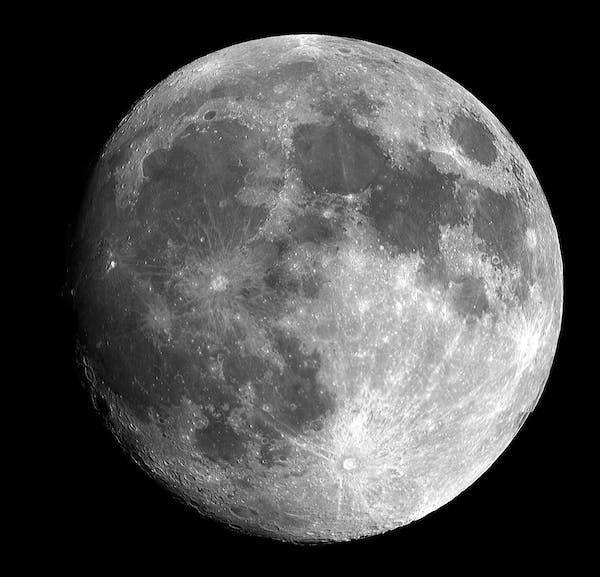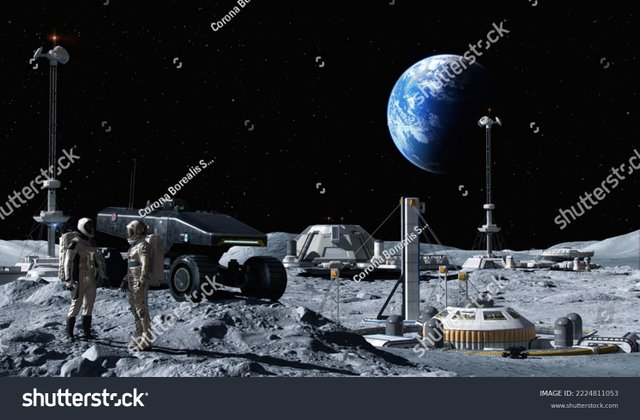"The Mystique and Marvels of the Moon: Earth's Loyal Companion"
Introduction:
The moon, Earth's constant companion in the night sky, has fascinated humanity for centuries. Its gentle glow and enigmatic presence have inspired myths, poetry, and scientific exploration. In this article, we will delve into the various aspects of the moon, exploring its formation, cultural significance, and the ongoing scientific endeavors to unravel its mysteries.

(https://www.pexels.com/search/moon/)
Formation and Characteristics:
The moon formed approximately 4.5 billion years ago through a collision between Earth and a Mars-sized celestial body. This cosmic cataclysm resulted in the creation of our moon, which has since become an integral part of our planet's cosmic ballet. The moon is the fifth-largest natural satellite in the solar system and is about 1/6th the size of Earth.
One of the moon's most captivating features is its phases, which result from its orbit around Earth. From the waxing crescent to the full moon and the waning crescent, these phases have captivated poets and stargazers alike throughout history. The moon's gravitational influence also plays a crucial role in Earth's tides, showcasing the interconnectedness of celestial bodies within our solar system.

(https://www.shutterstock.com/search/moon-layer)
The formation of the Moon is a fascinating tale rooted in the early days of our solar system, approximately 4.5 billion years ago. The most widely accepted theory explaining the moon's origin is the Giant Impact Hypothesis.
According to this hypothesis, a Mars-sized celestial body, often referred to as Theia, collided with the young Earth in a spectacular and cataclysmic event. The impact was so forceful that it led to the ejection of significant amounts of material from both Theia and Earth into space. The ejected debris, consisting of molten rock and metal, formed a rapidly rotating disk around Earth.
Over time, through the process of accretion, the material in this disk began to come together to form the Moon. The moon's formation occurred in the early stages of the solar system's development when collisions and interactions among celestial bodies were relatively common.
As the Moon continued to accrete and solidify, it eventually reached a state where its gravitational forces prevented further significant accretion. This process, known as lunar accretion, resulted in the formation of the Moon as we know it today. The moon's composition is primarily silicate rock, similar to Earth's mantle, with evidence of metal such as iron and nickel.
The formation of the Moon had profound implications for both Earth and itself. The collision not only contributed to the creation of our lunar companion but also played a crucial role in shaping Earth's early geology and atmosphere. The Moon, through its gravitational influence, has had lasting effects on Earth, particularly in the regulation of tides.
While the Giant Impact Hypothesis is widely accepted, ongoing scientific research continues to refine our understanding of the moon's formation. Techniques such as computer simulations and analysis of lunar samples brought back by the Apollo missions have provided valuable insights into the intricate details of this celestial dance that resulted in the birth of the Moon. The moon's formation remains a remarkable chapter in the cosmic history of our solar system, offering a glimpse into the dynamic and tumultuous events that shaped the celestial bodies we observe today.
Scientific Exploration:
The moon has been a focal point for scientific exploration, with numerous missions aimed at unlocking its secrets. The Apollo program, initiated by NASA in the 1960s, stands as one of humanity's greatest achievements. The historic Apollo 11 mission, in particular, saw astronauts Neil Armstrong and Buzz Aldrin become the first humans to set foot on the lunar surface in 1969.
In recent years, there has been renewed interest in lunar exploration. Various countries and private companies have set their sights on returning humans to the moon and establishing a sustainable presence. The moon's unique geological features and its potential as a stepping stone for future space exploration make it a compelling target for scientific investigation.
Future Prospects:
As we look towards the future, the moon continues to capture the imagination of scientists and space enthusiasts alike. Ongoing and planned missions, such as NASA's Artemis program, aim to send humans back to the moon, paving the way for eventual crewed missions to Mars. The moon's surface also holds valuable resources, including water ice, which could be utilized to sustain future lunar colonies and support deeper space exploration.

(https://www.shutterstock.com/search/future-moon-colony)
Conclusion:
The moon, with its timeless allure and scientific intrigue, remains an ever-present companion in our night sky. From ancient myths to modern space exploration, the moon continues to be a source of inspiration and discovery. As we venture into the cosmos, our lunar neighbor will undoubtedly play a vital role in shaping the future of human space exploration.